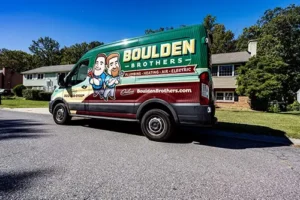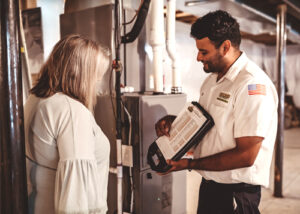Safety Risks Linked to a Failing Heater
Most of us don’t think twice about the heater until a cold snap hits and it suddenly groans louder than usual, or worse, won’t turn on at all. But a failing heater isn’t just about discomfort—it can introduce real safety risks into your home. And those risks often creep in quietly, without dramatic warning signs, until they become too serious to ignore.
Carbon Monoxide Exposure
This one tops the list because it’s invisible and dangerous. Older or damaged heaters can leak carbon monoxide (CO) when burners aren’t working properly. The gas has no smell, no color, and can spread through your home without you realizing it.
Some people describe symptoms like headaches, nausea, or dizziness before they even suspect CO. If the issue isn’t caught in time, the consequences can be tragic. That’s why professionals emphasize CO detectors alongside regular inspections. You wouldn’t drive a car without seatbelts; think of detectors the same way.
Fire Hazards
Heating equipment is one of the leading causes of residential fires. A failing heater increases the odds. Worn-out electrical wiring inside the unit can spark. Gas leaks around connections can ignite. Even simple neglect, like dirt buildup inside the system, can push components to overheat.
I once saw a furnace in a garage with scorch marks up the wall because of repeated overheating cycles. Luckily, it shut down before flames caught. That’s the sort of close call you don’t want repeated in your own home.
Electrical Shock and Malfunctions
It’s easy to forget heaters have more than burners—they rely on circuits, motors, and controls. Faulty wiring or corroded connections introduce another layer of safety risks: shocks, blown breakers, or damaged electronics in the house.
Sometimes you’ll notice flickering lights when the unit kicks on. Other times the only clue is a tripped breaker. Both are signals that the heater isn’t pulling power safely. And yes, ignoring them can lead to bigger problems down the road.
Indoor Air Quality Decline
This one feels less dramatic than fire or CO, but it still matters. A heater struggling with clogged filters, cracked heat exchangers, or damaged ductwork can push dust, allergens, or even combustion particles into the air you breathe every day.
Families with kids, elderly relatives, or anyone with asthma notice it first. Increased coughing, irritated eyes, or a lingering “off” smell in the house often tie back to heating issues. It’s another way a failing system quietly chips away at your health.
Signs You Shouldn’t Ignore
So how do you know if your heater’s adding safety risks to your home?
A few red flags stand out:
- Odd smells—burning, gas, or even metallic.
- Loud bangs, rattles, or humming that wasn’t there before.
- Discolored pilot lights (yellow instead of blue).
- Breakers tripping whenever the unit runs.
- Uneven heating with some rooms freezing while others feel fine.
If you’re nodding along to more than one of these, it’s time to act.
Why Professional Repair Matters
Yes, YouTube is full of “easy furnace fixes,” but heaters aren’t toaster ovens. They connect to gas, electricity, and duct systems that run through the whole house. The wrong fix introduces more safety risks than the original problem.
That’s where pros like us come in. You call. We come. It’s fixed. Fixed right the first time. That’s the promise. We don’t patch problems—we identify what’s wrong, address it, and leave your system safe to run when the cold weather sticks around.
Real Story From the Field
One Richmond homeowner thought their heater just needed a filter change. But every time it turned on, the lights dimmed across the house. They shrugged it off. A few weeks later, the main breaker tripped so hard it left burn marks on the panel. We found the blower motor failing and pulling excess current every cycle. Left unchecked, that could have caused fire damage.
Stories like this aren’t rare. They’re reminders that heaters don’t fail silently—they send signals, and it’s up to us to listen.
FAQ
How often should a heater be inspected?
At least once a year, ideally before heavy winter use. Annual checks catch small issues before they become safety risks.
Do space heaters pose the same dangers?
Yes, and sometimes more. They account for a high percentage of home heating fires. Use them cautiously and never as your main source of heat.
Is replacement always necessary if there’s a problem?
Not at all. Many issues—like dirty burners, failing sensors, or worn belts—are repairable. Replacement comes into play when age and repeated failures make the system unreliable.
What’s the simplest step I can take as a homeowner?
Change your filters regularly. It won’t fix major issues, but it prevents the heater from overworking and lowers long-term safety risks.
Don’t Wait for Trouble
A failing heater is more than an inconvenience—it’s a hazard. From carbon monoxide to fires to poor air quality, the risks stack up quickly when maintenance is skipped. If your system is showing signs of struggle, don’t wait.
Call the team that makes it simple. You call. We come. It’s fixed. Fixed right the first time. And with that, you’ll get back to what matters most: staying warm without worrying what the heater might be hiding.

